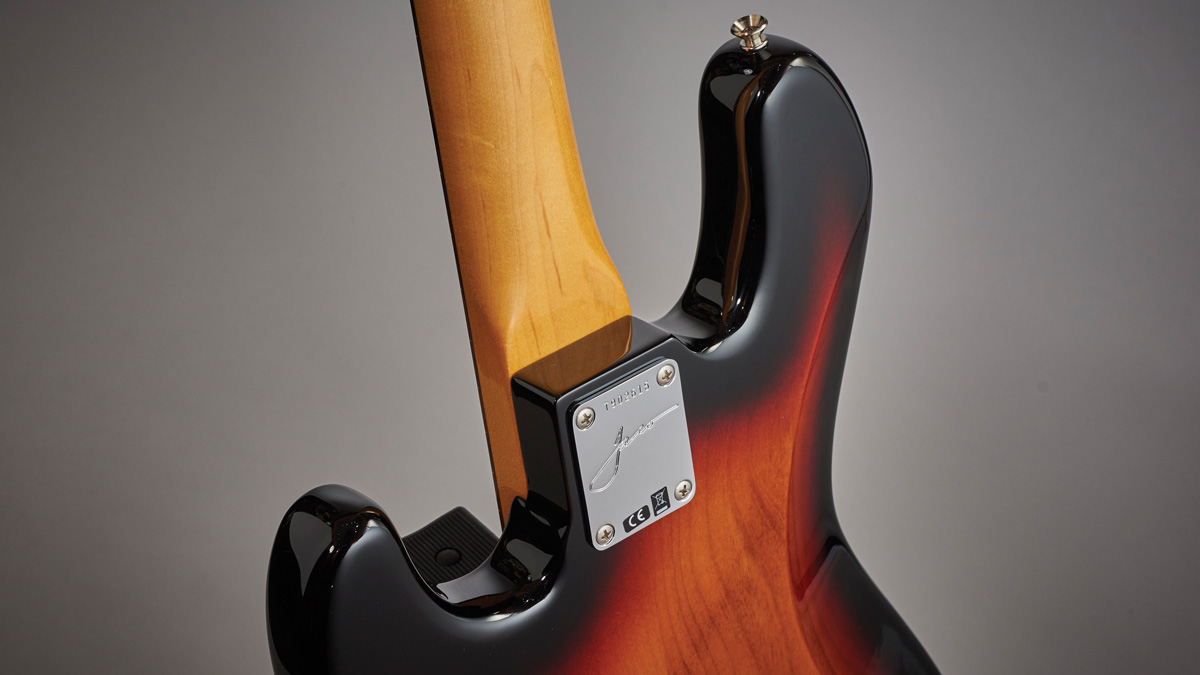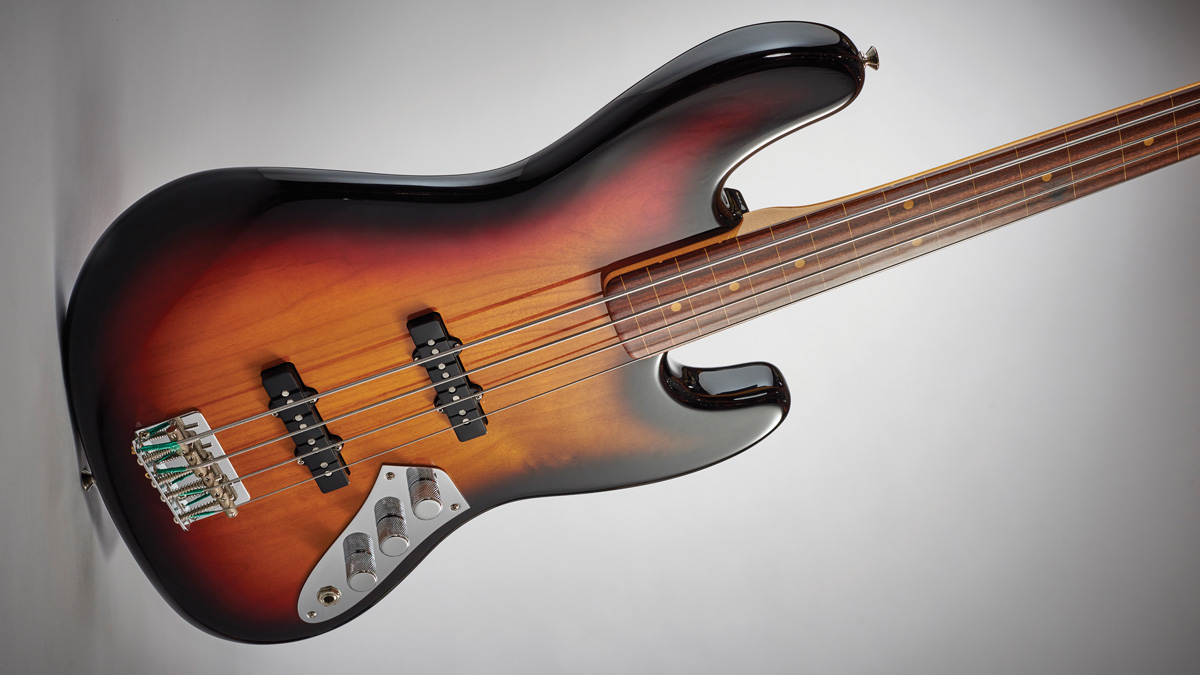MusicRadar Verdict
A great instrument with much going for it. It won’t turn you into Jaco, but you can have a lot of fun trying!
Pros
- +
A solid performer in every respect and a suitable tribute to the master.
Cons
- -
Not cheap, but feel the quality.
MusicRadar's got your back
Aside from Hofner and Paul McCartney, is there a more indelible bass association than Jaco Pastorius and his beloved ‘Bass Of Doom’?
We think not, so naturally we were rather keen to run the rule over this particular instrument from the Fender Artist Signature range. While a fretless Jazz is not a particularly rare breed, when it’s connected to a bassist as iconic as Jaco, we sit up and take notice.
Straight from its hardshell case, it certainly looks the part - so what has it got to offer?
Build
The Jaco Jazz certainly feels solid and well assembled, as any Jazz should, but there is a feeling that this particular model has had a little extra time and care spent on it, reflected by the pricetag.
In terms of features, there is enough to appeal to both Jaco fans and those simply looking for a great fretless. The reverse vintage tuners and a strap button on the rear of the headstock are complemented by Jaco’s engraved signature on the four-bolt neckplate, and the nitrocellulose lacquered, three-colour sunburst alder body, which gives the bass a played-in feel from the outset.
Strangely, the bass comes fitted with flatwound strings, possibly
to save the fingerboard from string wear before it is sold - but as we all know, if you’re looking for a little of the Jaco magic, you really need to be stringing this bass with steel roundwounds.

The urethane-coated pau ferro fingerboard is delightfully smooth to the touch, while the slim Jazz neck’s 38mm nut width, 19mm string spacing and exceptional setup make this an extremely playable bass. Navigation isn’t too much of a problem, as this is a lined fretless with aged position markers on the front and side of the neck.
Interestingly, the area around the lower horn has been sprayed differently to replicate an aged Jazz whose scratchplate has been removed for some time. A nice touch.
There is some headstock bias, but it’s nothing to worry about once the Jazz is placed on a strap: wearing the bass feels very comfortable and familiar. The C-shaped neck profile and nitro neck finish make for a very smooth, sleek playing experience, while the hardware is generally of a very high standard: both the vintage tuners and knurled controls (volume, volume and master tone) turn very smoothly.
The standard, but vintage-style, bridge is simply what it is without any fuss or furore. The neck pocket is tight and well-seated and overall, this feels like a substantial but very pleasing bass to play by anyone’s standards.
Sounds
Acoustically, this bass is very responsive: holding it against your body illustrates just how resonant it is. Without the actual ‘Bass Of Doom’ to compare it against (as if!), it is hard to know how closely this bass is actually modelled on the legend, but if this one is any indication, then the original was a fabulous beast to play.
Plugging in, the passive tone is remarkably vibrant, with a smooth bass response, a fundamentally pronounced midrange and an articulate top end. Soloing each pickup produces the expected response from each unit, but where a fretted instrument has a definite tone based on how the string performs, with a fretless, far more nuances can be obtained.
This bass is a great tribute to the master, solid and versatile
These are based on how you attack the string, fret a note, where the note is played, how you fret the note and for how long - all of which can have a subtle effect on the tone produced. Thankfully, this bass addresses all of those elements with ease. It’s a simple instrument at heart, but the joy of its simplicity is its ability to convey the notes you play.
We’re pleased to report that the controls offer a gradual increase and decrease through the whole of each turn, so you will hear gradual changes in volume and tone - as opposed to the annoying on/off operation that some Fender pots seem to deliver!
This bass is a great tribute to the master, solid and versatile - and although the fretless tone may not suit every musical style or your particular taste, it can’t be denied that it offers an alternative colour to your bass playing.
Fender has obviously gone to town: the quality is tangible and every aspect of the performance is of a very high standard. Needless to say, you won’t replicate all of Jaco’s tones in an instant, because his bass was unique through modification, his amplification was another individual aspect, and then there was the tone in his head, conveyed by his fingers - but you can pay tribute to his legacy with this great-sounding and great-playing bass.
"No one phoned me. They never contacted me and I thought, 'Well, I'm not going to bother contacting them either'": Ex-Judas Priest drummer Les Binks has died aged 73
With the same mesh-head playability and powerful new Strata module as its bigger brothers, Alesis Strata Club brings a new compact form to its best-selling range
“An incredible experience that went beyond just teaching music”: The UK’s biggest free music making weekend is extended to four days










